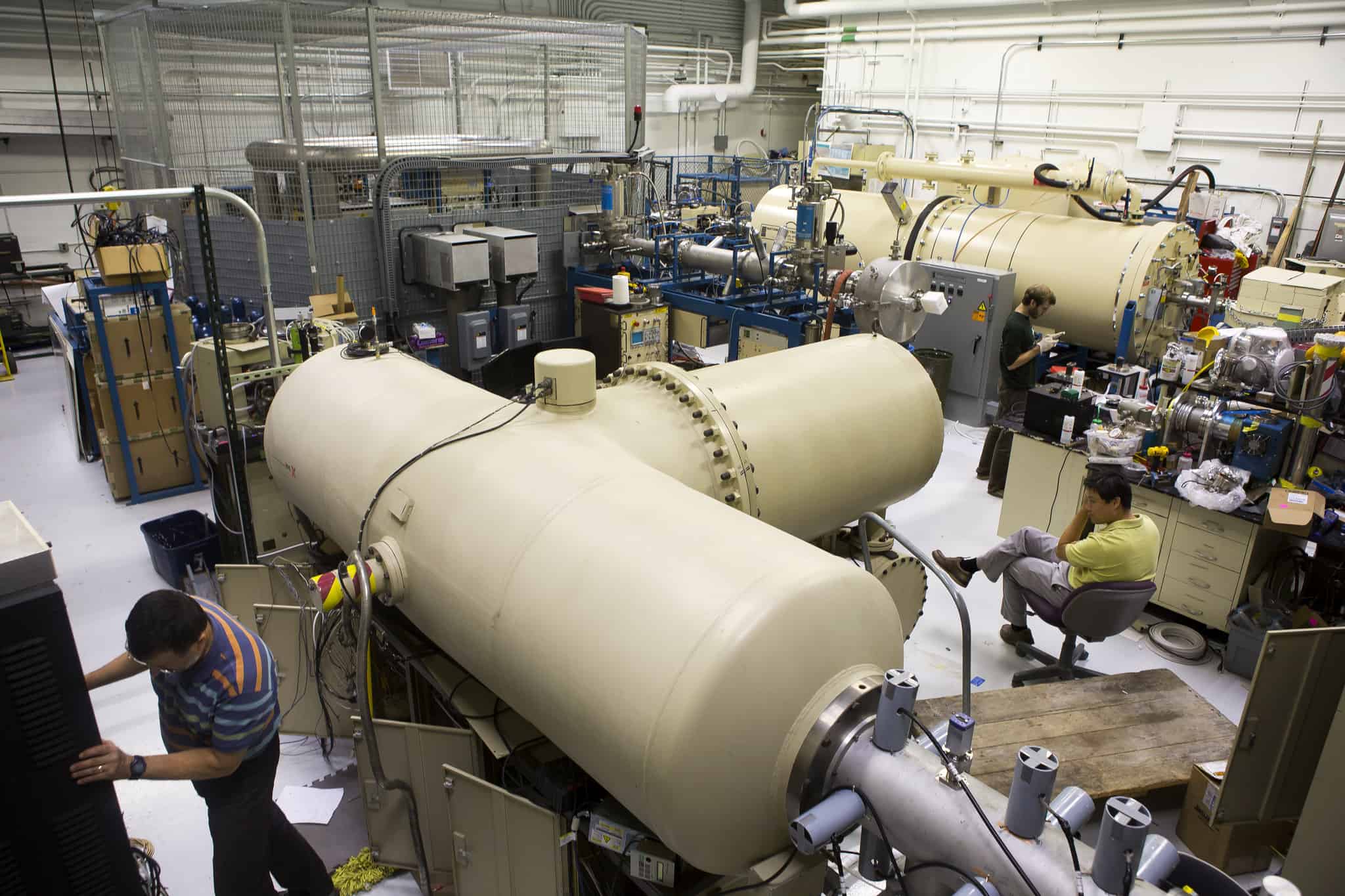The Michigan Ion Beam Laboratory (MIBL), part of the University of Michigan’s Department of Nuclear Engineering & Radiological Sciences (NERS) laboratory framework, recently overcame the challenge of remaining operational during a significant renovation of the Naval Architecture and Marine Engineering (NAME) building, which houses the lab.
The renovations primarily focused on the NAME building but included improvements to the spaces MIBL uses for meetings and user visits. These enhancements were accompanied by upgrades to MIBL’s own infrastructure, including an improved network thanks to NERS senior desktop support specialist Tommy Tunks and an upgraded power distribution system. Despite the extensive construction, MIBL was able to “keep the ions on,” ensuring ongoing support for students, researchers, and users throughout the process.
The renovation, which began after the Winter 2024 term, wrapped up last month. NERS staff members, including Zhijie (George) Jiao, Alex Flick, Prashanta Niraula, Fabian Naab, Kai Sun, and Tunks, played crucial roles in maintaining the lab’s functionality. This team coordinated with the facilities group to manage sensitive equipment shutdowns during planned power outages, adapted the lab’s operational modes to accommodate both interior and exterior work, and supported student and user access during the construction.
As NERS graduate student Justin Hamil shared, Jiao was instrumental in helping students navigate the challenges of the construction period. “George has been an invaluable aid in getting me up to speed in MIBL. He consistently goes above and beyond to solve challenges in the lab and assist students in their research,” Hamil said. Recounting a particularly challenging 50-hour irradiation experiment during the summer, Hamil praised Jiao’s willingness to support students, even staying late to set up remote access when laboratory space became unavailable.
“George saw how tired I was and encouraged me to go home and take a rest. He offered to watch the experiment until I returned, which MIBL staff do not need to do. On the second night, George helped me set up a remote desktop, allowing the experiment to continue uninterrupted,” Hamil added.
“During the summer, NAME was not an ideal space to work in, with non-functional bathrooms, blocked entrances, constant banging, and other loud noises,” said MIBL director and NERS professor Kevin Field. “Despite all of this, the team continued to show up, adapt the workflow in MIBL, and support cutting-edge research. It truly highlights their dedication and resilience.”
The successful continuation of MIBL’s operations during the renovation is a testament to the commitment of the NERS staff and their ability to adapt to difficult circumstances while maintaining a high standard of research and support for students and users alike.
